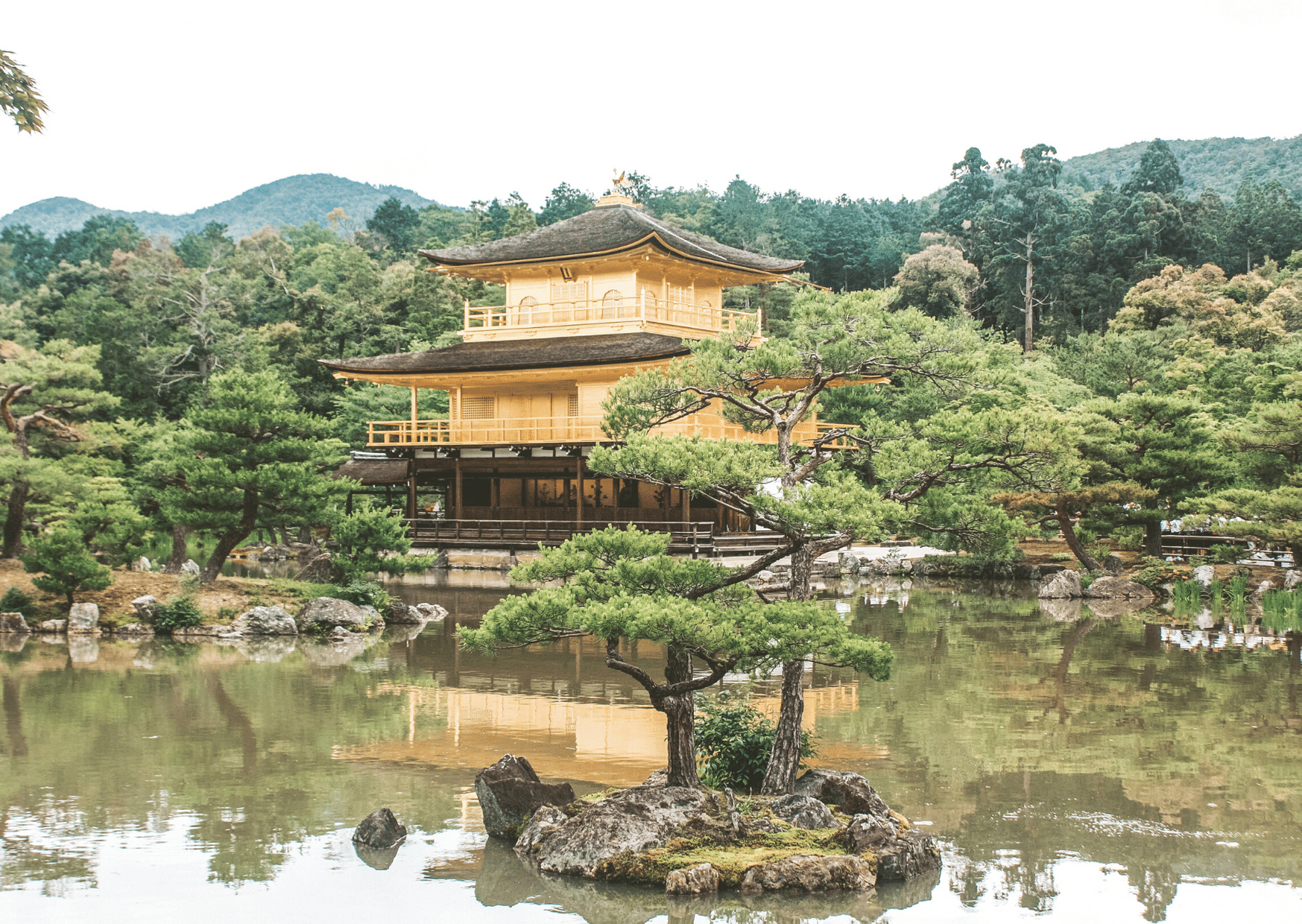
2 Days in Kyoto Itinerary Japan: A Curated Travel Guide
Thinking about spending 2 days in Kyoto Japan? Keep reading to find the best things to do in Kyoto for the perfect 2 days in Kyoto itinerary.
With the perfect balance of harmonious temples, unpretentious palaces and exquisitely peaceful gardens, Kyoto is firmly on the map as one of Japan’s favourite and most visited cities.
There’s something to see on every corner, ancient, traditional neighbourhoods to explore and evergreen gardens to find moments of stillness.
It almost feels like parts of Kyoto are stuck in time in a long moment of zen-like stillness and away from the most popular bustling sights, small, unique temples, gardens and alleys await to be explored, not to mention many UNESCO World Heritage sites, during your 2 days in Kyoto.
In this Kyoto 2 day itinerary, you’ll find all the highlights of the city as well as a few other gems to see along the way. While two days in Kyoto is enough to see what the city has to offer, I highly recommend staying a little longer if you can, to discover some off-the-beaten-track treasures.
Kyoto really is a stunning place to experience Japanese culture, Buddhist temples, its cute and narrow streets as well as the most popular attractions. It’s arguably one of my favourite cities in Japan.

*This 2-day kyoto itinerary post contains affiliate links meaning I might make a small profit if you choose to book at no extra cost to you. This helps me to keep supplying you with quality content at no cost to you.
Is 2 days in Kyoto Enough
While Kyoto, with its serene temples, lush gardens, and rich history, deserves as much time as one can spare, a well-planned Kyoto 2-day itinerary can cover many of its highlights.
Though two days in Kyoto only scratches the surface of this culturally rich city, it’s enough to experience its most famous sights and get a feel for its profound beauty. It is definitely possible to visit Kyoto in 2 days and many do.
For travelers tight on time who are also exploring any other of Japan’s incredible locations, a brief Kyoto in 2 days trip will surely leave a lasting impression.
Best Time to Visit Kyoto
Kyoto, like much of Japan, is a year-round destination and when you visit will probably depend on a variety of different factors.
The busiest seasons are in spring, especially during sakura or cherry blossoms season (end of March – early April) and at the beginning of autumn (September-beginning of October) when the leaves begin to change, lighting up all the Japanese gardens like wildfire.
Summer(July and August) is often very hot and humid and normally receives a lot of rain and winter (December, January and February) is cold but not cold enough to stop you from exploring.
I visited at the end of June and it was perfect- the famous sights were not too crowded and the weather was mild and enjoyable. If you’ve only got 2 days in Kyoto and you’re already in Japan you might want to plan your visit at the last minute after checking the weather forecast.
Getting to Kyoto
The best and easiest way to get around Japan is by train. Train travel in Japan is efficient, clean and fast. Train travel in Japan can be expensive but it doesn’t have to be if you plan your trip right.
I always recommend going for the JR Pass which allows for unlimited train travel around Japan with JR Lines and even includes the bullet train.
JR Passes include 7 days and 14 days of unlimited train travel around Japan, as well as Regional Passes if you prefer getting to know one region in more depth.
The JR Pass saved me hundreds of dollars on my trip to Japan. Make sure you don’t miss out, especially if you’re traveling to more than just a handful of destinations. Get your JR Pass here.
Getting to Kyoto from Osaka
The best way to get to Kyoto from Osaka is by train, specifically on the JR Kyoto Line/Special Rapid Train.
The ticket will set you back around 600 yen and it takes just under 30 minutes and is included in the Japan Rail Pass.
You can also take the Hankyu Railways straight to Arashiyama, as well as the JR Shinkansen (bullet train) or the Keihan Railways although these will cost you quite a bit more.
Getting to Kyoto from Tokyo
The best way to get to Kyoto from Tokyo is by Shinkansen or bullet train.
The fastest train will get you to Kyoto in 2 hours 20 minutes but if you have a Japan Rail Pass take the Hikari service as this is the only one included with the pass getting you to Kyoto in just 20 minutes more.
If you don’t have a Japan Rail Pass, (which I highly recommend you get) then opt for the Kodama train which takes almost twice as long but is also one of the cheaper options.
Getting to Kyoto by bus is also an option, however, travel times can be very long and it’s not really worth it if you’ve only got two days in Kyoto.

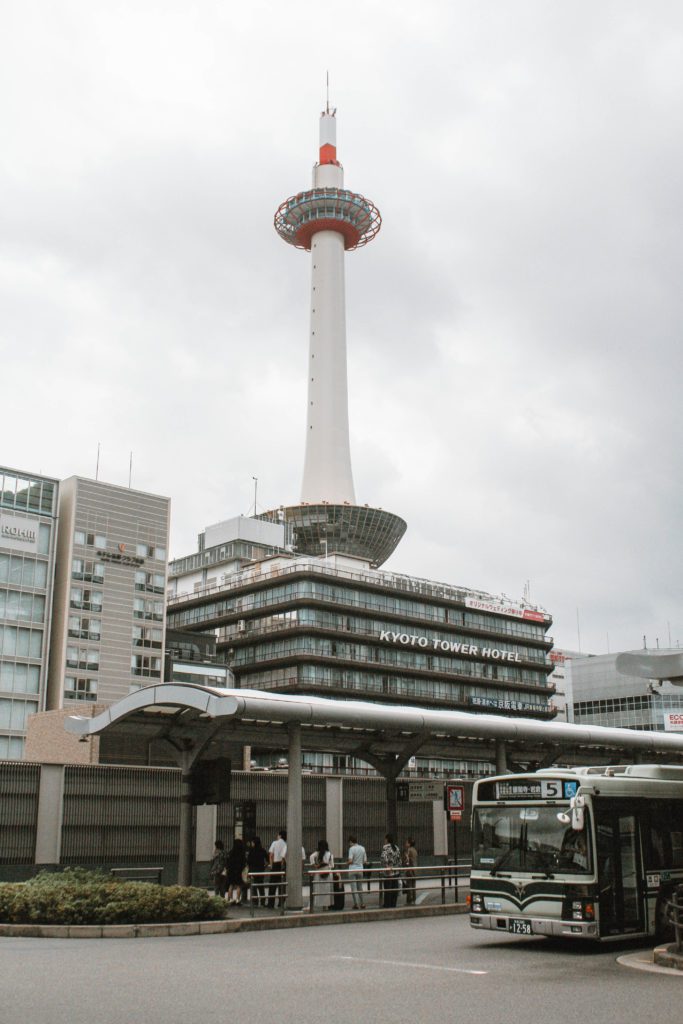
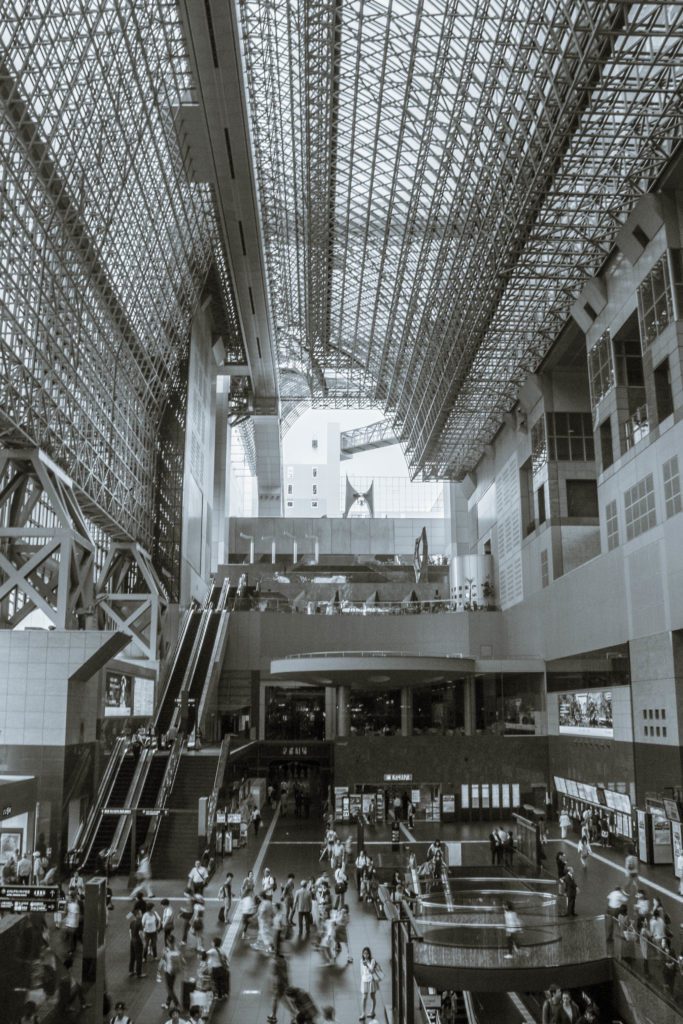
Kyoto 2 Day Itinerary
Kyoto is one of Japan’s highlights, with many ancient temples, gardens and beautiful areas to visit.
On a Kyoto 2 days itinerary it is definitely possible to see many of the highlights as the city is small, has good transport links and in parts completely walkable.
If you do want to discover some hidden gems or some off-the-beaten-track temples and gardens I would definitely suggest staying another day or two to fully take advantage of this gorgeous city.
Note: Overcrowding is also a huge problem as Kyoto might just be the most popular city in Japan. I’d highly encourage you to travel in the offseason, or, if this isn’t possible, visit places very early or later in the day.
This Kyoto 2 day itinerary takes this into account so you have the best possible experience during your stay and see the most in this short time.
2 Days in Kyoto Itinerary Summary
If you’re short on time, here’s the condensed Kyoto itinerary.
Day One: Fushimi Inari Shrine, Kiyomizu-dera, Ysaka Shrine, Philosopher’s Path, Ginkaku-ji, Higashiyama, Japanese Spa experience
Day Two: Arashiyama Bamboo Grove, Tenryu-ji, Ryōan-ji, Kinkaku-ji,
Where to Stay: Aman Kyoto, Park Hyatt Kyoto, Hotel Malda
Where to Eat: Sojiki Nakahigashi, GION YAMAGISHI, Monk
2 Days in Kyoto Itinerary – Day One
Fushimi Inari Shrine
Start the day early at one of Kyoto’s most popular places and most crowded sights the Fushimi Inari Shrine.
There aren’t many hours of the day when this beautiful shrine isn’t crowded so I highly encourage you to get there early to experience the peace and divinity here.
Fushimi Inari Taisha is the main shrine dedicated to the kami Inari, or holy powers of fertility in the Shinto religion.
At the Shinto shrines, you will see hundreds of torii gates, painted red and black, lining the path. The site is located at the base of a mountain, which, confusingly is also called Inari.
It’s possible to wander around the mountain following the trails that will lead you to many smaller shrines- a great idea if it happens to be really busy.
The shrine is open 24 hours a day and it’s free so it might be an idea to come and see what it looks like by night.

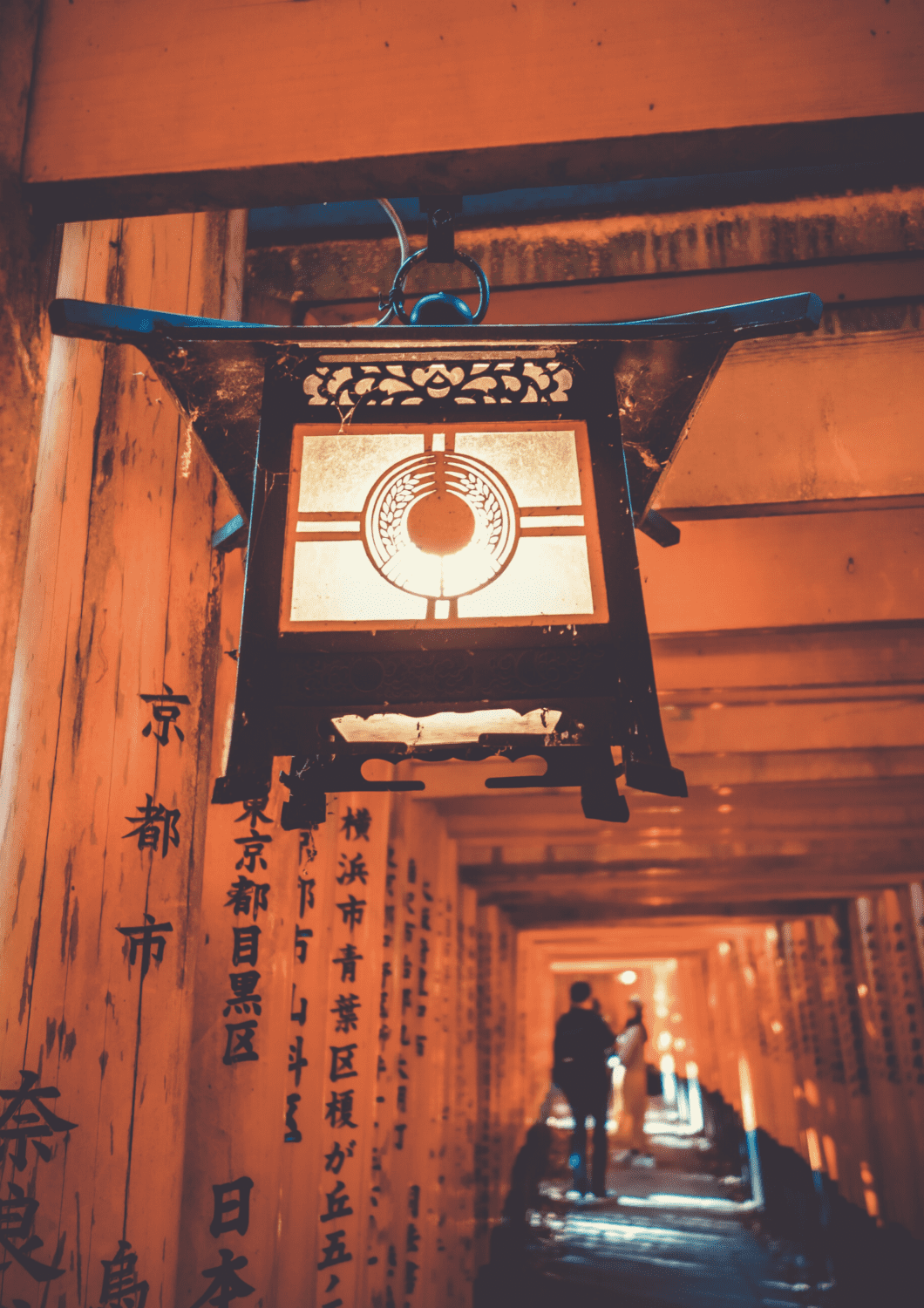
Kiyomizu-dera
From here take the train directly north to the Higashiyama district, to Kiyomizu-dera, Kyoto’s, if not Japan’s most famous temple.
This Buddhist temple dates back over 1200 years and is a place of peace, and worship for many and some of the best cityscapes in Kyoto.
You’ll be greeted by the large, red, deva gate and move onto the pagoda and finally the main hall, a wooden structure with a large veranda supported by uniquely-tall pillars that jut out over the hillside with the entire city of Kyoto in the background.
This temple is extremely popular with school groups so arrive as early as possible to avoid them.
Once you’ve managed to pull yourself away from the magnificent temple, make sure to also pop into POJ Studio, a short walk away. The retail space was once a traditional Japanese townhouse, offering a selection of Japan’s finest handicrafts. Discover everything from hinoki wood tableware to distinctive tie-dye indigo wall hangings
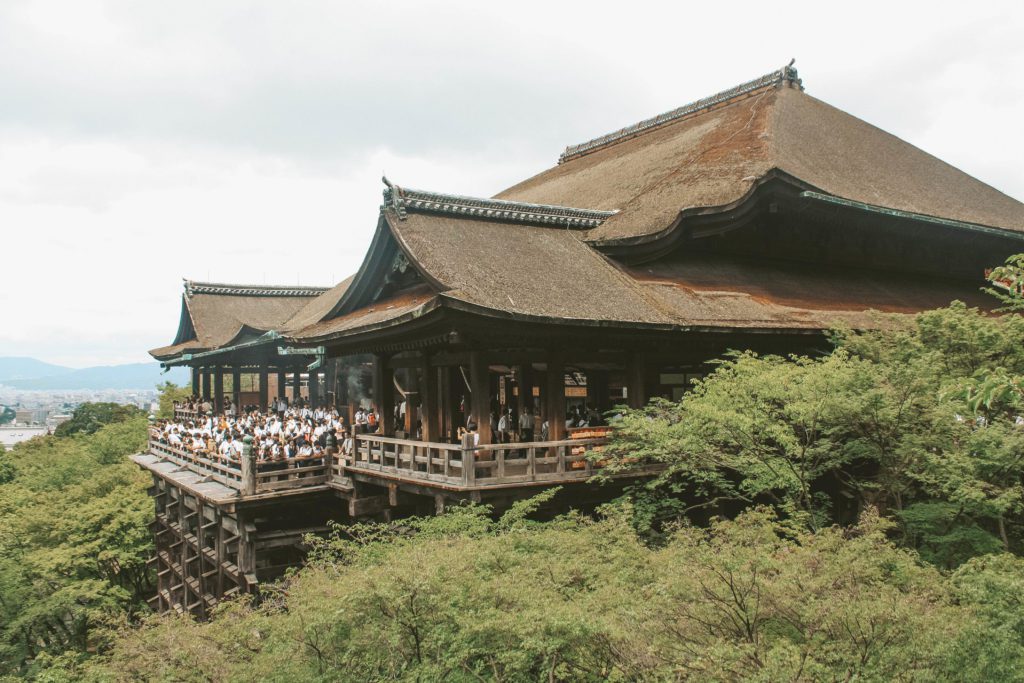
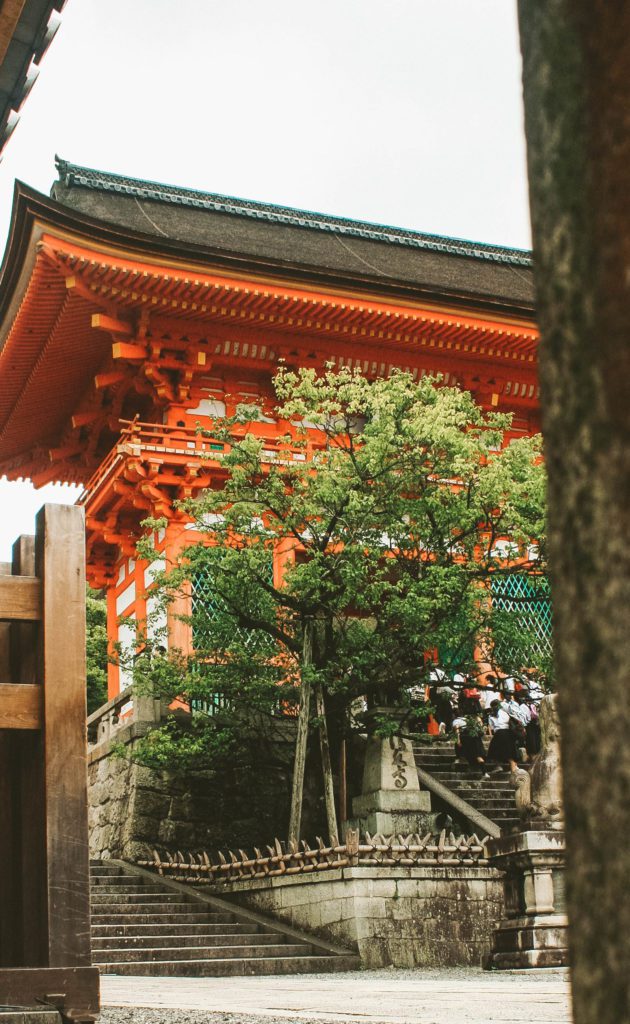
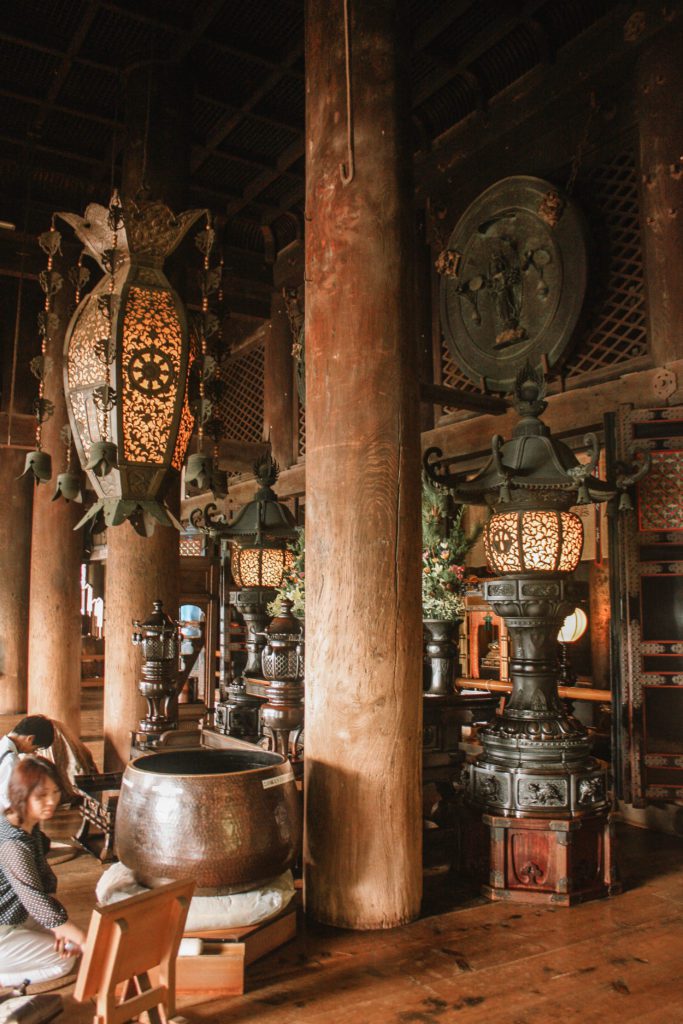
Ysaka Shrine
After, make your way just 10 minutes north to the Yasaka Shrine, where you’ll encounter a beautiful red main gate inviting you to explore this beautiful Shinto shrine.
Again if you decide to miss this now, it’s open 24 hours a day so you can always come back after dark. Spend just a few minutes here before moving on.
Philosopher’s Path
From Yasaka Shrine, it’s a very scenic 45-minute walk, north-west to the Philosopher’s Path. On the way, you’ll pass many beautiful and photogenic streets, parks and shrines.
The Philosopher’s Path is a small footpath, lined with trees that follows a snaking narrow canal through this part of Kyoto. If you’re in Kyoto during cherry blossom season or in the autumn, a visit here is a must as blossoms here are vibrant and so are the autumnal colours of the surrounding foliage.
Walk around and explore all the cute shops nearby before heading to Ginkaku-ji or The Silver Temple.
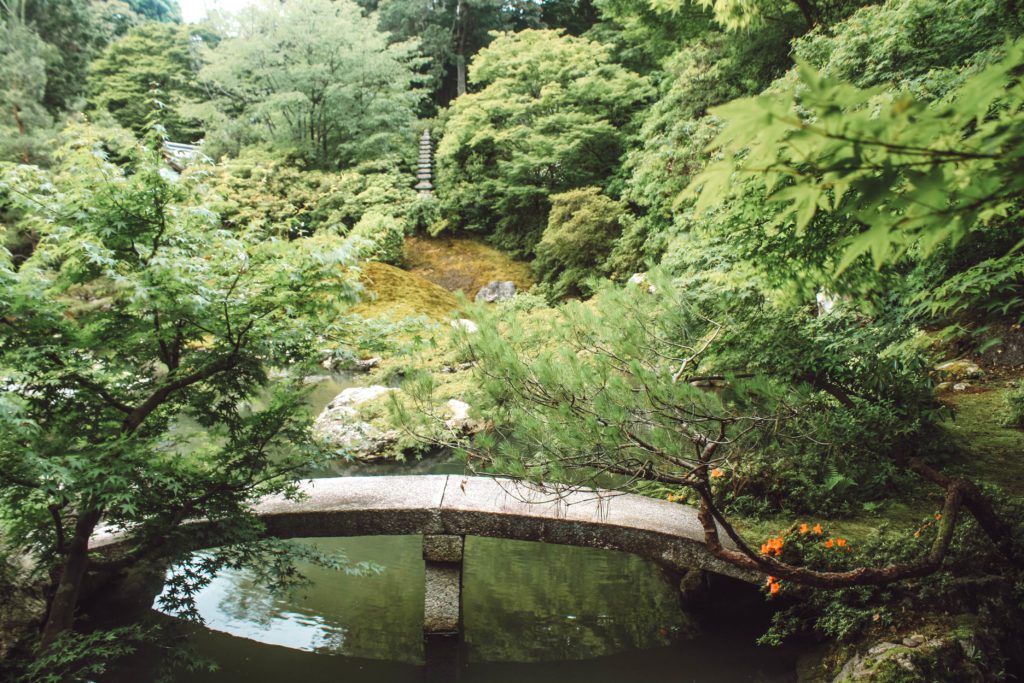
There aren’t too many restaurants around this area for healthy, plant-based food so I would recommend looking around to see what you can find or heading to a nearby Lawson or 7-Eleven and ploughing on.
It might sound like a ridiculous idea but convenience stores in Japan take food to another level. Lawson, in particular, has a variety of vegan-friendly onigiri, filled with pickled vegetables, ready-to-go sushi as well as ready-to-eat tofu.
Pair that with a sugar-free iced green tea and you’ve just done lunch on a serious budget.
Ginkaku-ji
Almost adjacent to the Philospher’s Path is Ginkaku-ji, the sister temple of the world-famous Golden Pavilion.
For me, this is one of the most beautiful temples in Japan, the space consisting of a near-perfect moss-covered garden, punctuated by natural, wooden temples that harmonise perfectly with the surrounding environment.
This Zen temple is really somewhere you can sit and contemplate and simply be at peace in the moment. There’s so much beauty here that it really is difficult to leave and move on with the itinerary.
Higashiyama
For the rest of the afternoon make your way back down to explore Higashiyama or Old Kyoto. If you love the traditional Japanese aesthetic then this area of Kyoto will be a dream.
While Higashiyama is similar to Gion District in many ways, it’s often less busy and prettier in many respects as it also incorporates the small hills on Kyoto’s eastern side. Alternatively, you can also visit Gion if you have time but we prefered Higashiyama.
Walk the small streets and admire the delicate shop fronts, unique houses and minimalist streets that are so photogenic they’re begging for you to start filling your SD card.
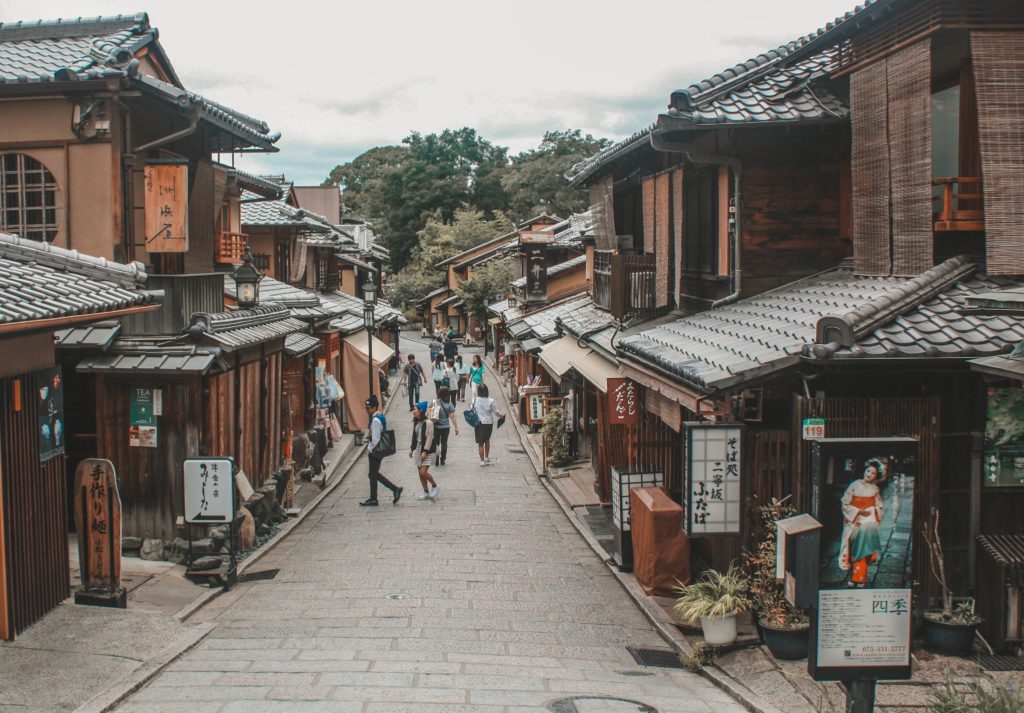
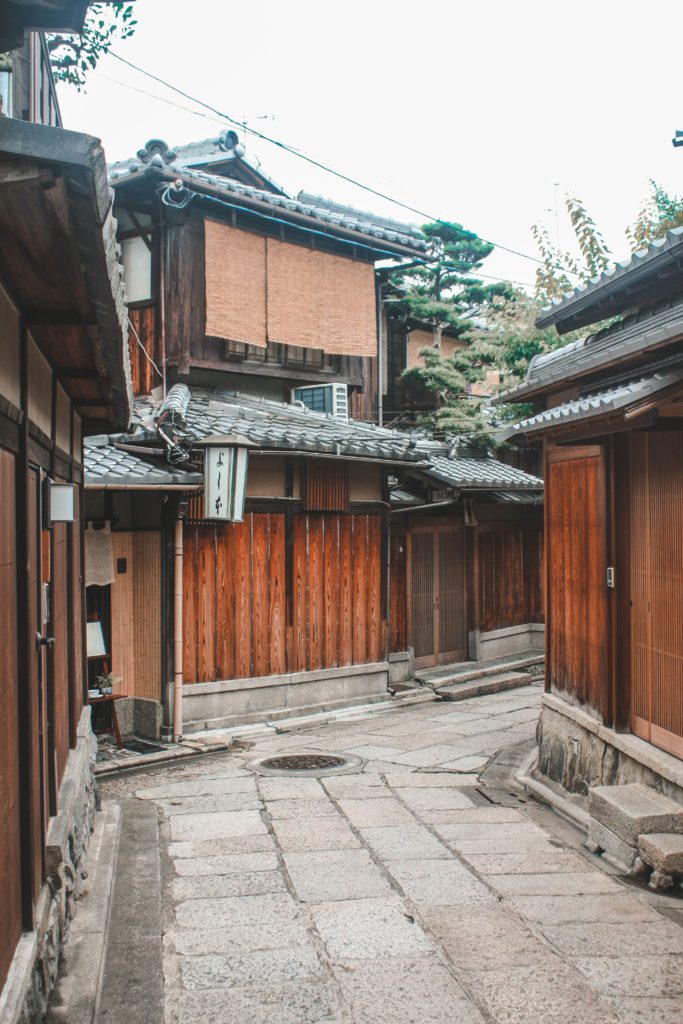
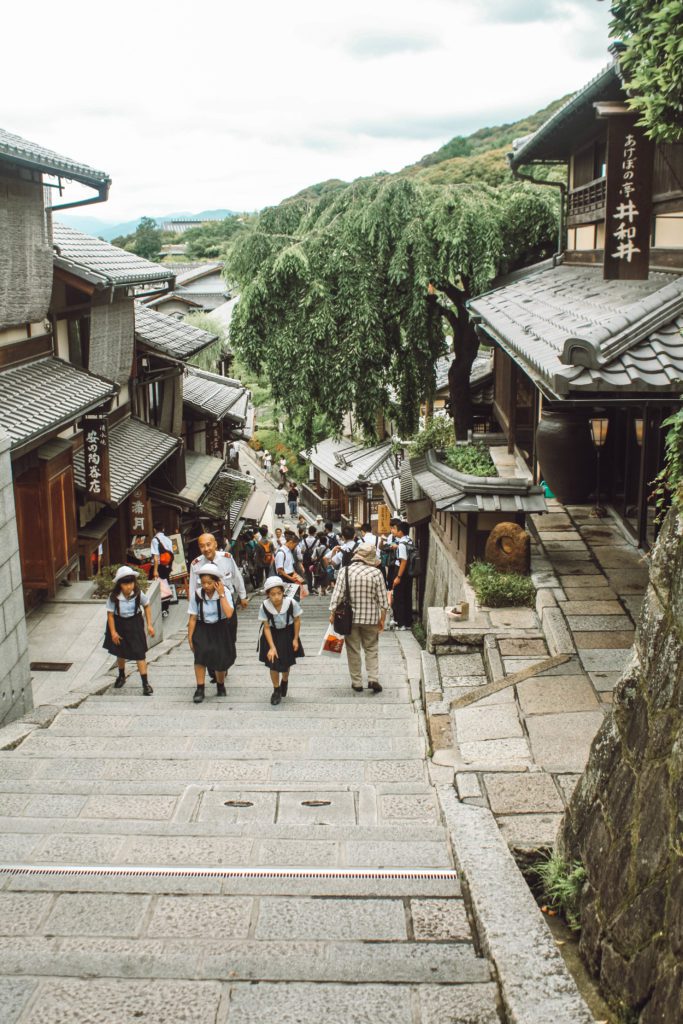
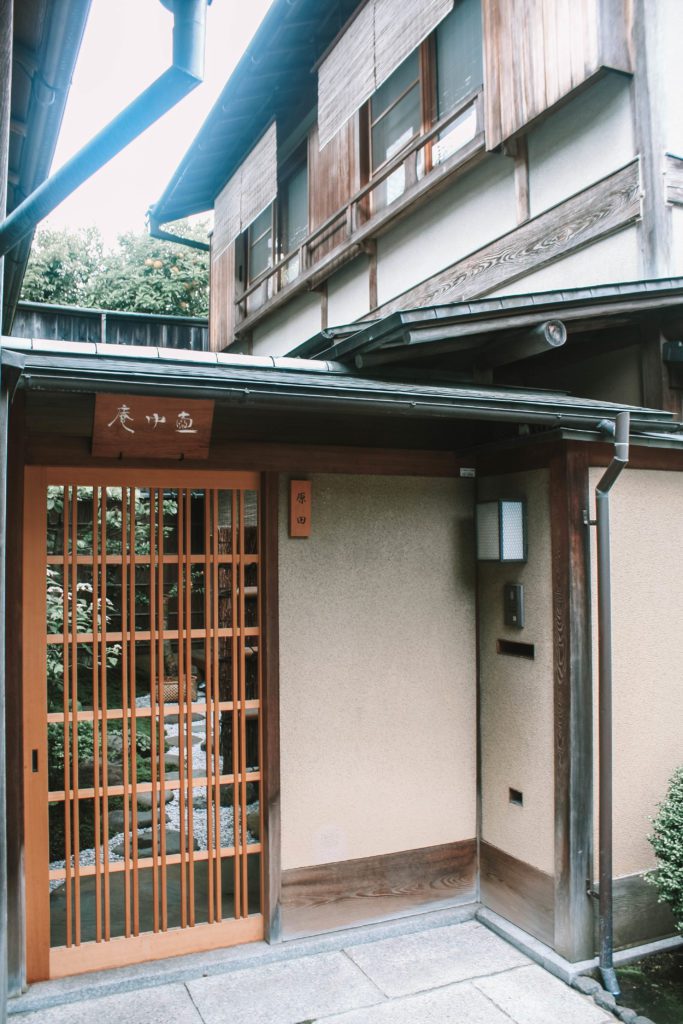
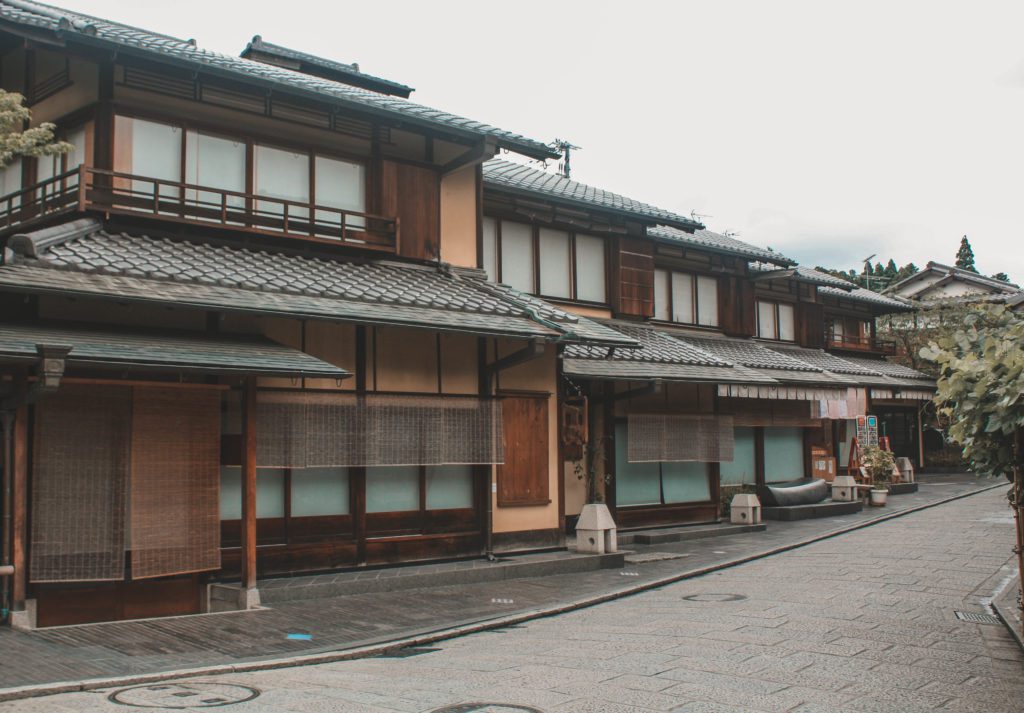
Indulge in a Japanese Spa Experience
Kokya Spa in Kyoto is a serene haven that epitomizes the fusion of traditional Japanese aesthetics and contemporary wellness practices. Nestled in the heart of Kyoto, just 5 minutes from Kyoto Shiyakusho-mae Station, this spa offers a tranquil retreat for those seeking to rejuvenate their mind, body, and spirit.
You’ll be able to indulge in a variety of treatments that draw on ancient Japanese healing techniques, including signature massages, facials using local natural ingredients, and thermal spring baths that tap into Kyoto’s rich heritage of onsen.
Kokya Spa is a sanctuary where ancient rituals meet modern relaxation, offering a unique journey through Japan’s wellness culture. A beautiful way to finish the day in Kyoto.
The spa is open from 10-7 pm and you can book your experience here.
Read more: The Definitive Japan Bucket List | 30 Japan Ideas For Your Trip
2 Days in Kyoto – Day Two
Arashiyama Bamboo Grove
Make the most of your 2 days in Kyoto itinerary and begin your day as early as possible.
In Kyoto, the proverb ‘The early bird gets the worm’, rings especially true and even takes on new meaning. Make your way to the area of Arashiyama, and this morning to the Arashiyama Bamboo Grove in particular.
The stunning Insta-famous Arashiyama bamboo forest is not only a photographer’s dream, it’s a place of tranquillity and extreme natural beauty, especially early in the day and at first light.
Walk around, explore the nearby shrines and Kameyama Park, a great scenic spot during cherry blossom season and watch the city wake up.
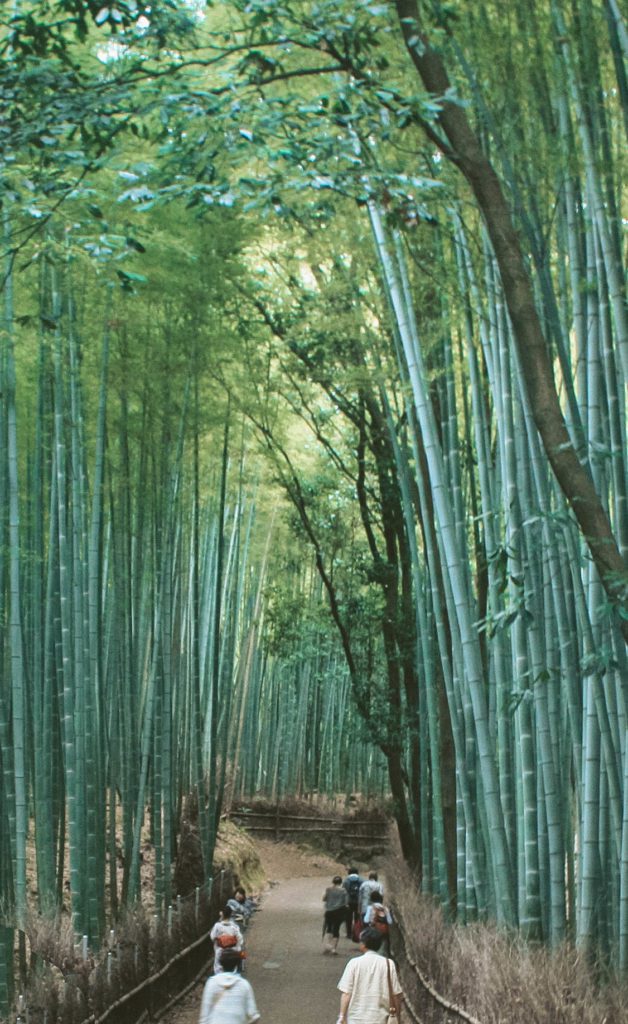
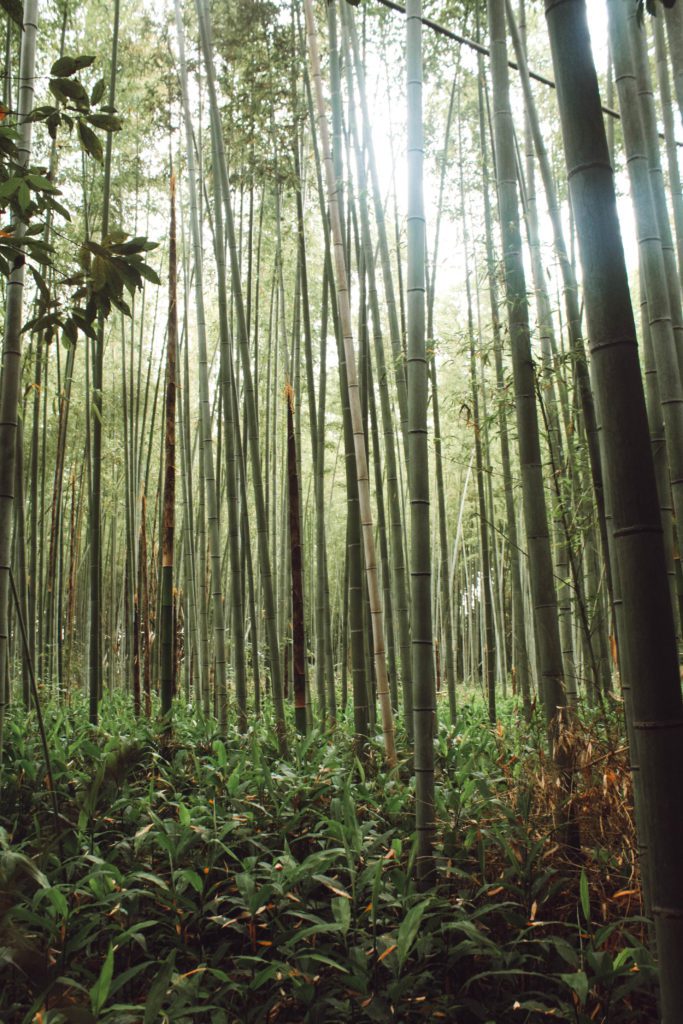
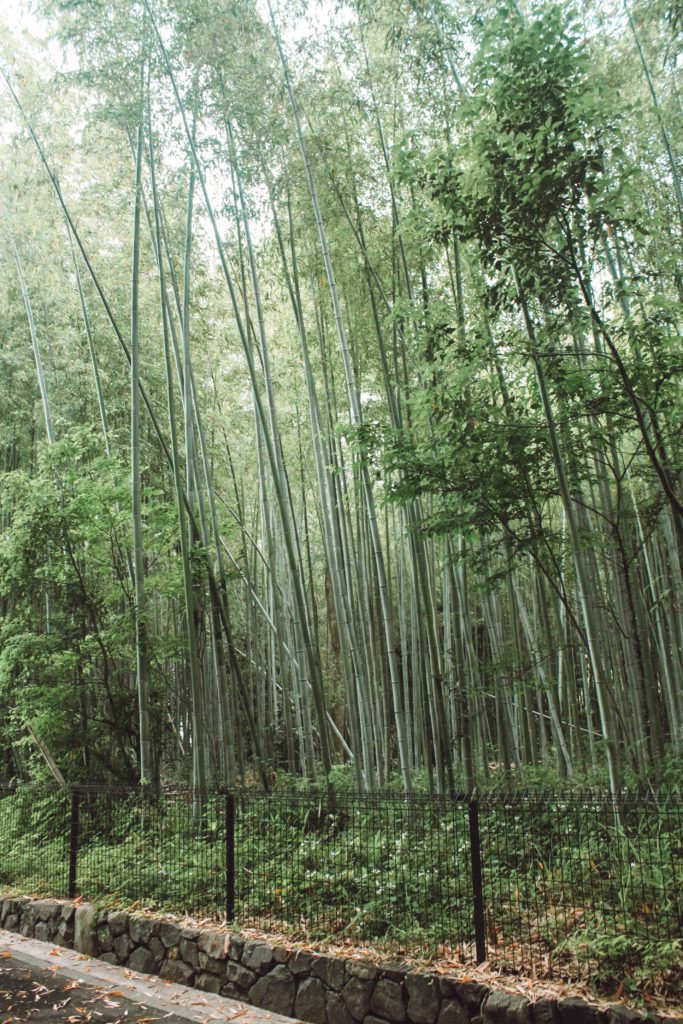
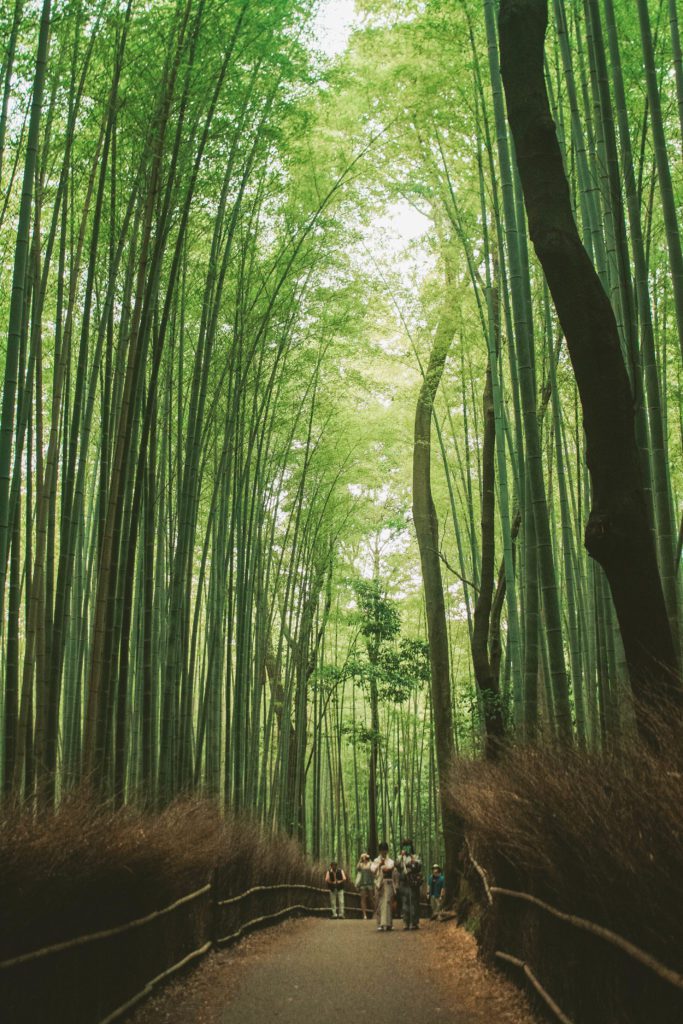
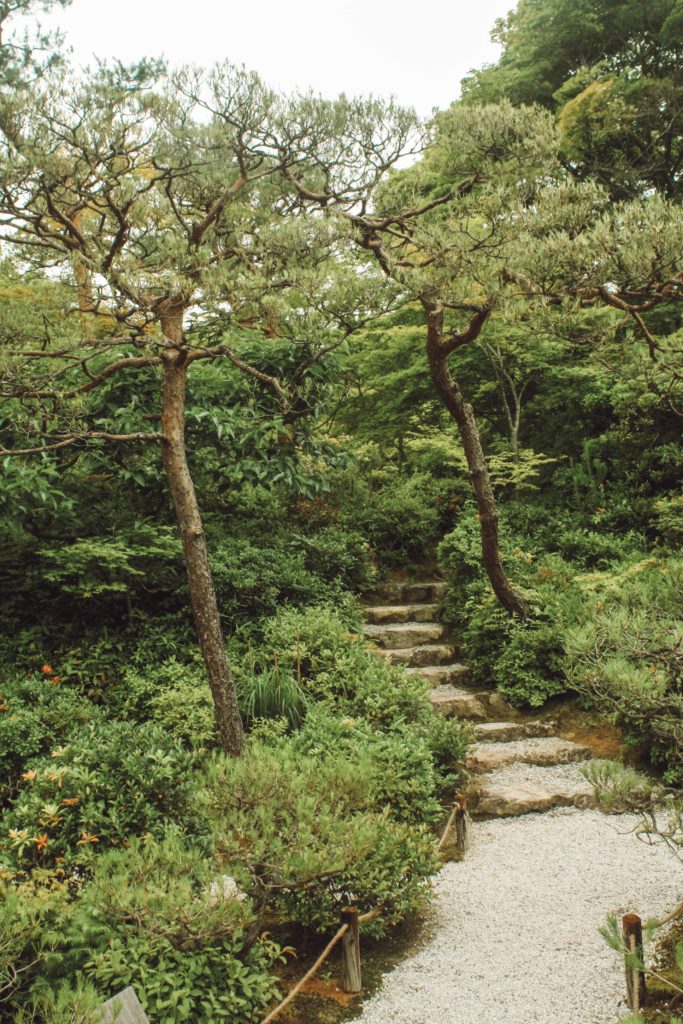
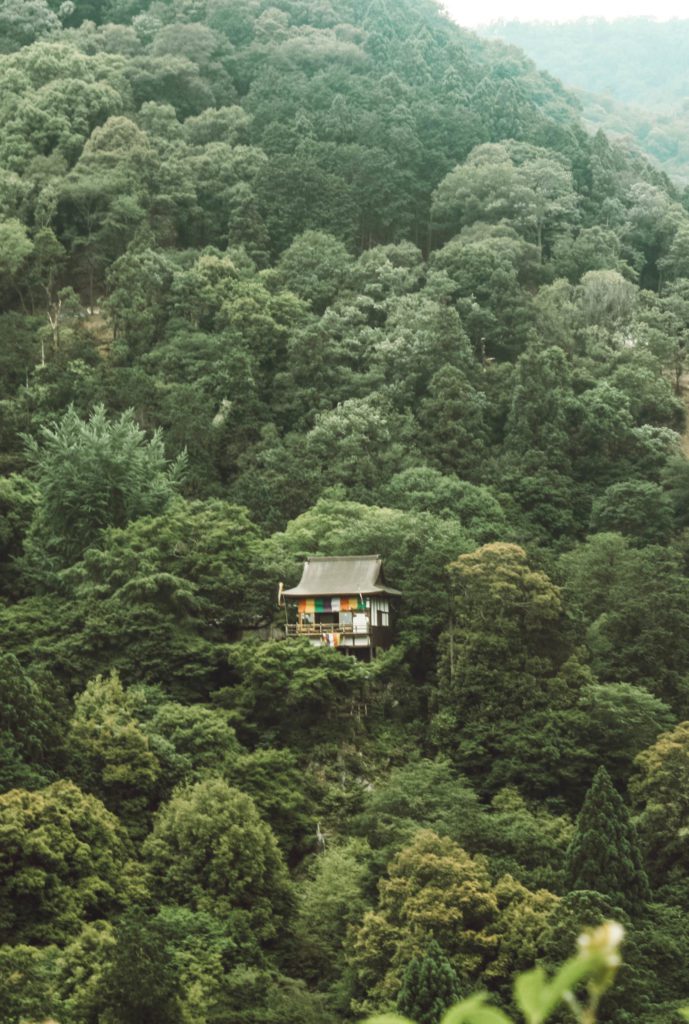
Tenryu-ji
Just steps away from the Bamboo forest is Tenryu-ji, a UNESCO-registered temple, the next stop on your Kyoto 2 day itinerary.
This 700-year-old zen temple consists of the main gate, teaching hall and main Ōhōjō (abbey) which looks out into a serene garden and pond.
The garden here really is a highlight so spend as much time as you please enjoying the early morning air and light on your 2 days itinerary in Kyoto.
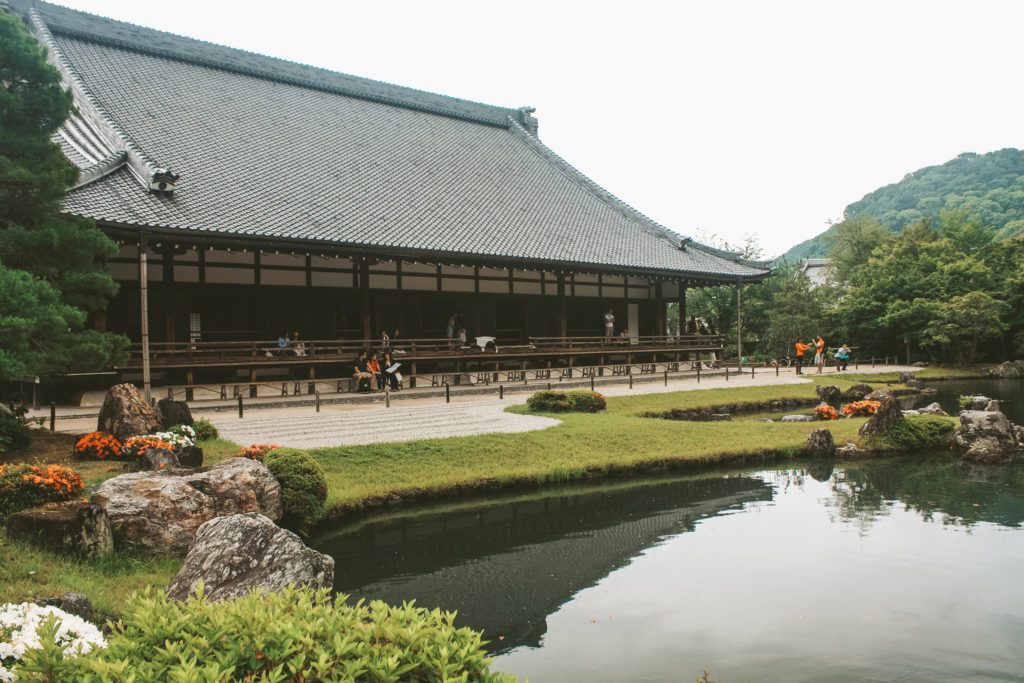
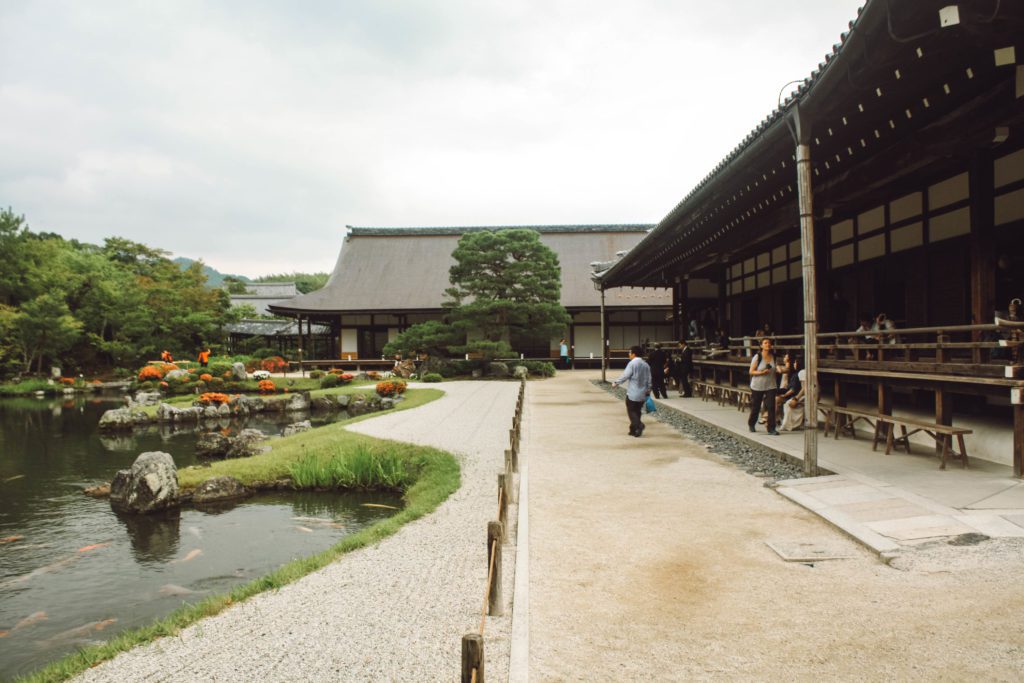
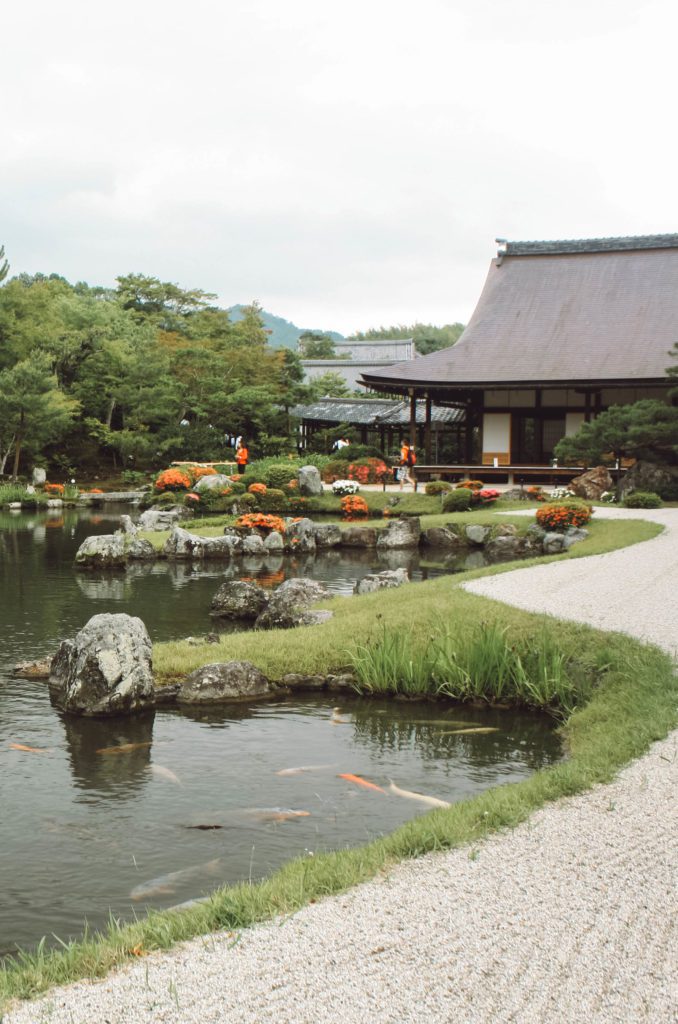
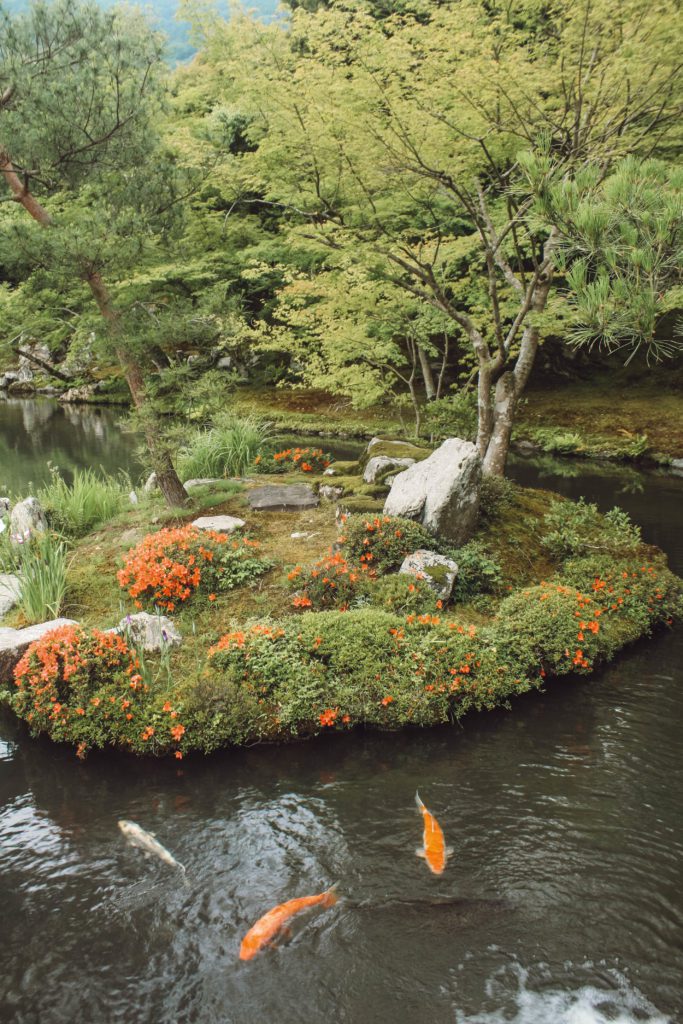
Ryōan-ji
After lunch head north-west from Arashiyama to Ryōan-ji, a picturesque zen temple, famous for its unique stone garden.
After visiting a few Japanese gardens you’ll notice that the texture of the earth is vital; some are grass, others shrub or even moss and others, like this one, are perfectly formed stone.
This ‘dry landscape’ design is based around the juxtaposition of larger rocks around which smaller pebbles are raked into perfect linear patterns. This UNESCO World Heritage stone garden is surrounded by mystery, beauty and energy.
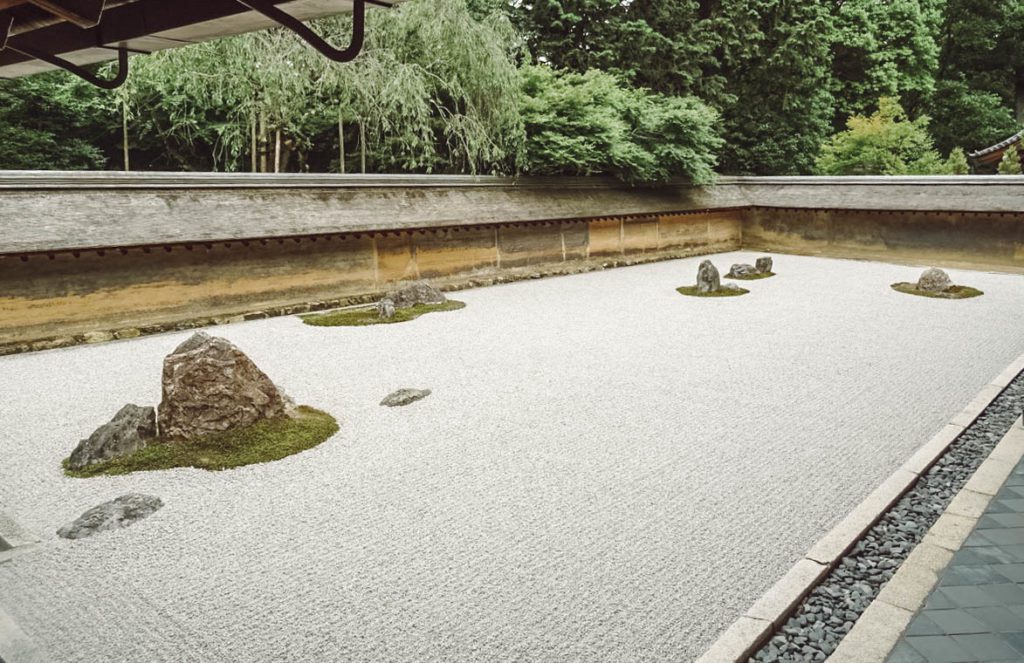
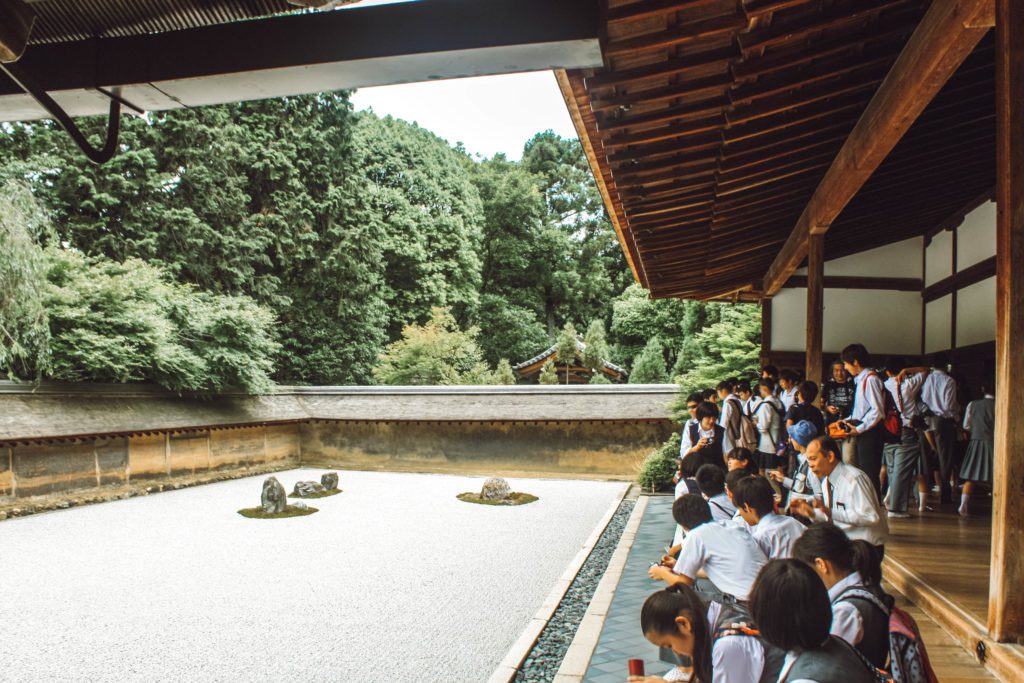
Kinkaku-ji
From here is a short walk to Kinkaku-ji or the Temple of the Golden Pavillion.
This iconic temple is nothing short of superb and a must visit on a 2 day Kyoto itinerary. A Zen Buddhist Temple, built on what was once a statesman’s villa features a shimmering golden-roofed, wooden temple sitting beside a mirror pond and within a wonderful Japanese strolling garden.
The garden calls for interaction between the inside and the outside world as the temple gets reflected in the mirror pond on a calm day.
Walk around the relatively small grounds, admire the beauty having saved one of the best for last during these 2 days in Kyoto.
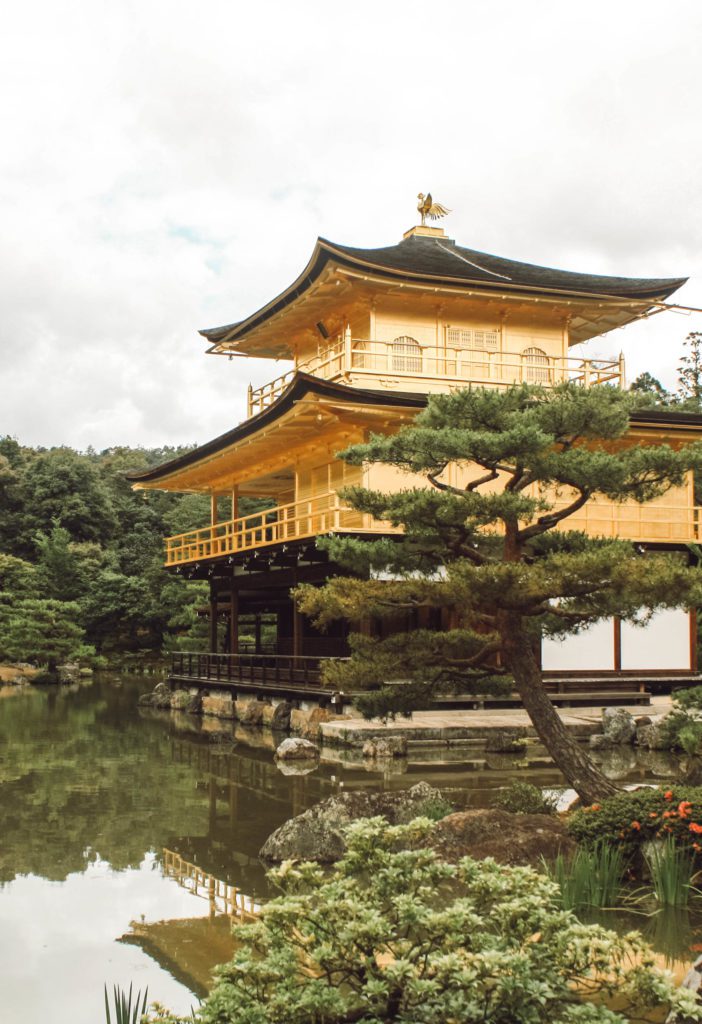
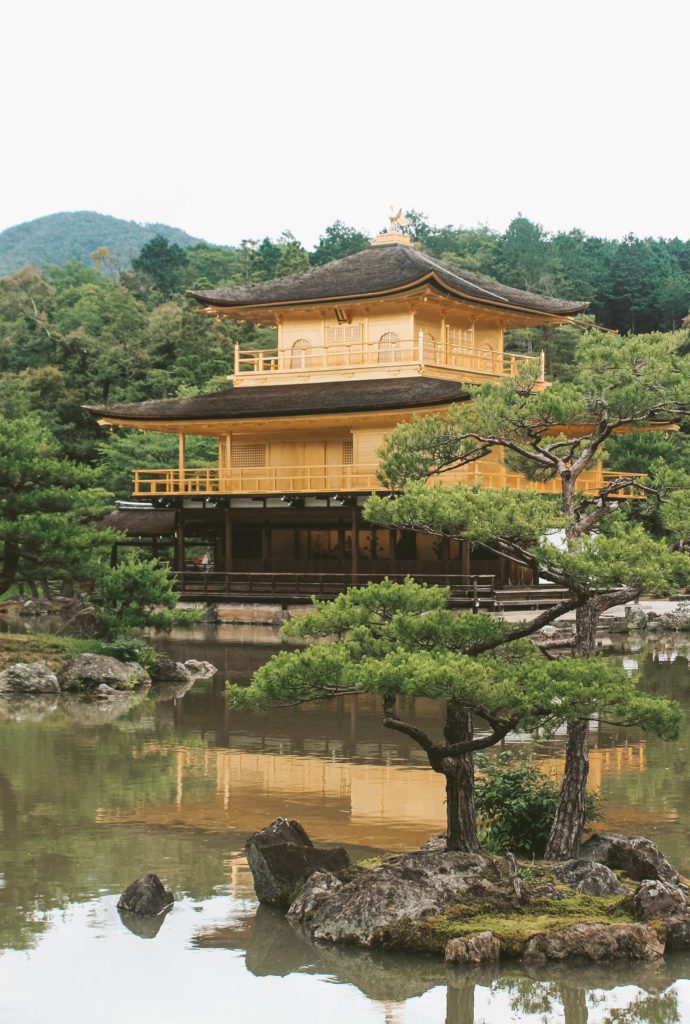
For dinner head to the Gion district, another example of ‘Old Kyoto’ which comes alive at night.
Spend your time walking the streets and savouring the atmosphere, watching geishas going by or having a well-earned drink in a nearby cafe/bar.
This area is incredibly photogenic, even by night so make sure you bring your camera to capture every corner of this stunning, historic area. The perfect way to end your Kyoto 2 days trip.
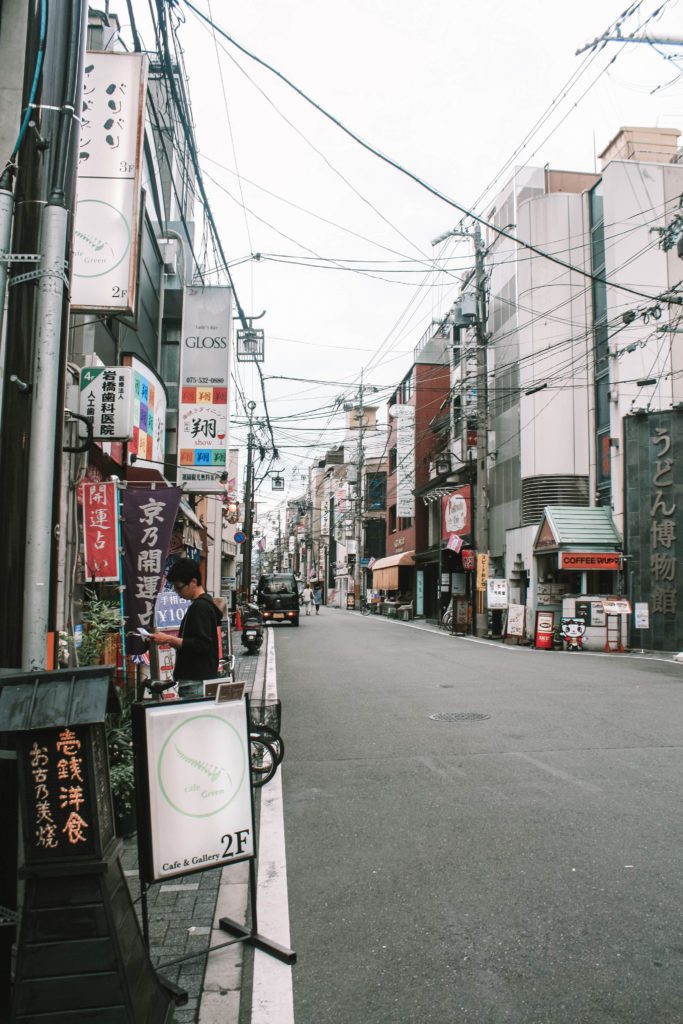
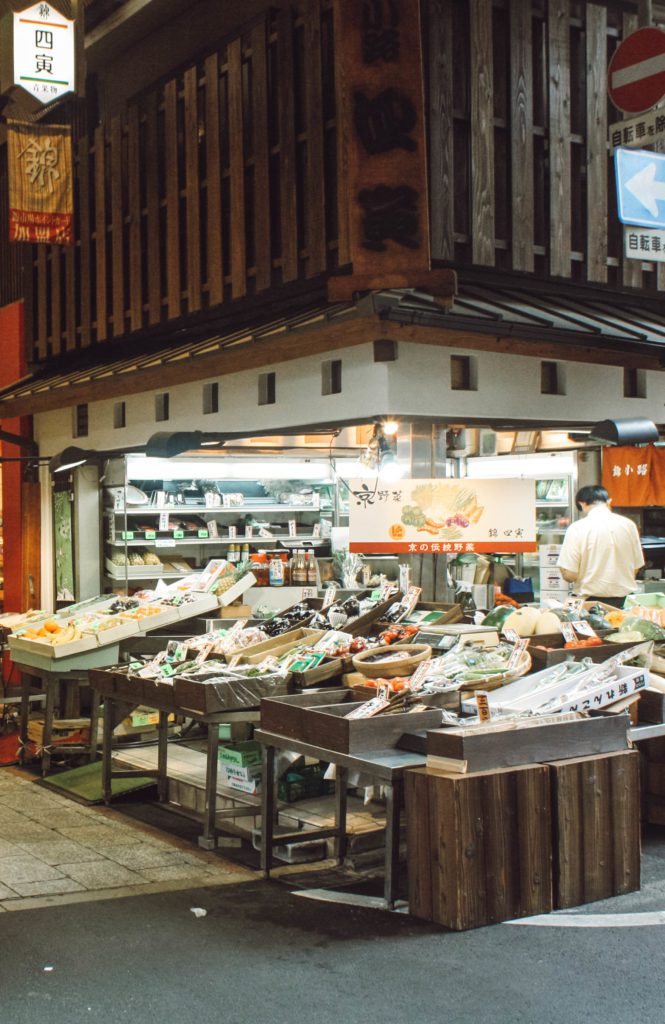

Where to Stay in Kyoto
Kyoto is quite small and compact and most hotels are located centrally in the area around the train station, Hiroshiyama and Gion. If you’ve got just 2 days in Kyoto I’d highly recommend staying in those areas or in any of the options below.
Park Hyatt Kyoto – One of the most swoon-worthy properties in Kyoto for design, amenities and service, this Park Hyatt property ticks all the boxes. Check availability and book here.
Aman Kyoto – a luxurious retreat blending seamlessly with its historic surroundings, featuring elegant accommodations, exquisite dining, and serene spa experiences in the heart of Kyoto. Book a stay here.
Hotel Malda – A brilliant property and more affordable, this gorgeous hotel is minimalistic and big on functional design and the breakfast sets are incredible. Book a room here.
Hotel Resol Trinity Kyoto– A beautiful, zen, minimalist hotel with dark yet beautifully lit interiors, onsite onsen and a solid breakfast. If you love Japanese aesthetics and design, this hotel is for you. The location is brilliant too. Check rates and availability here.
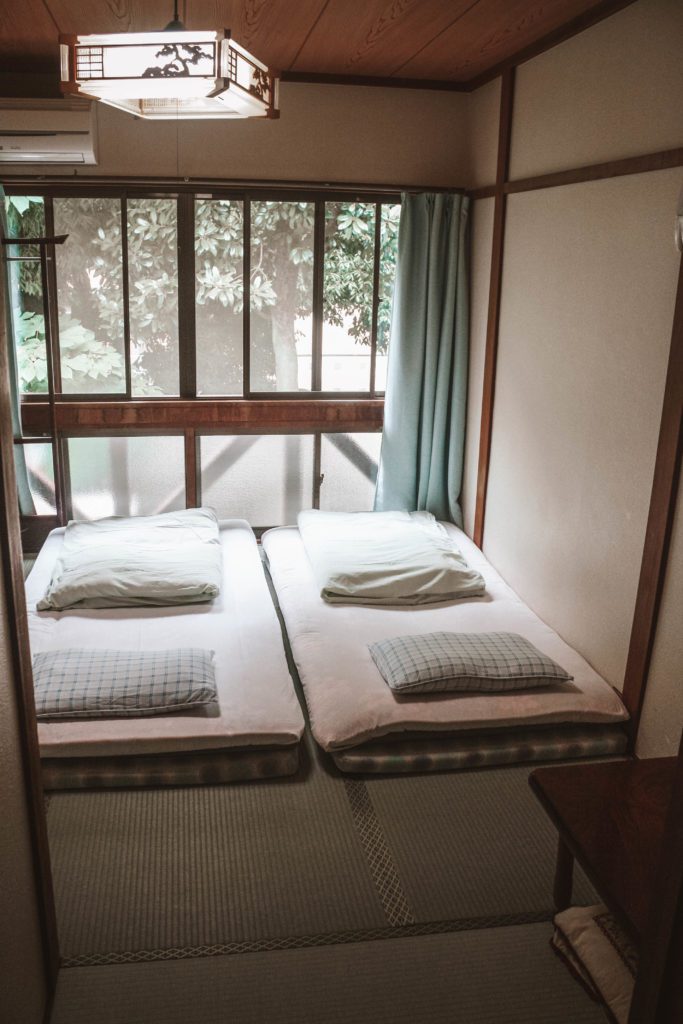
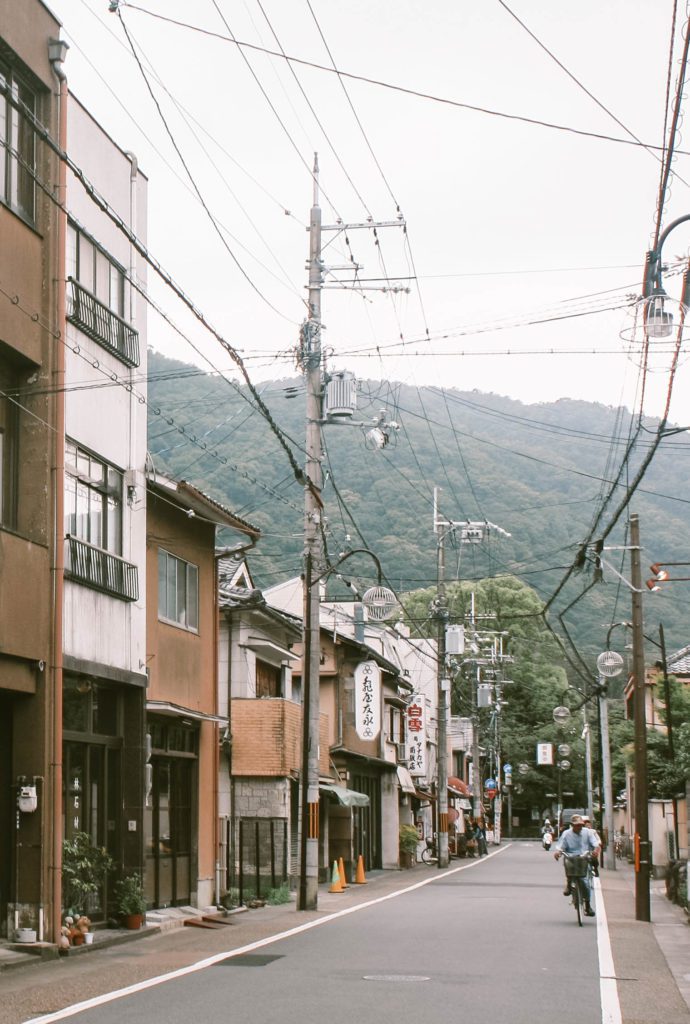
Where to Eat in Kyoto
When it comes to healthy, nutritious food, and traditional foods Kyoto is one of the best places in Japan. There’s a range of traditional spots as well as new, up-and-coming dining experiences focused on the most simple Japanese ingredients.
Here are some of our top restaurants in Kyoto you must try during your Kyoto 2 day stay.
Gion Yamagishi – Incredible traditional dining experience in Gion with some of the finest Japanese dishes run by Takahiro Yamagishi. Unmissable.
Monk– Possibly one of the best spots for pizza in Japan. You might think Kyoto isn’t the place to eat pizza but this spot will prove you wrong.
Soujiki Nakahigashi – A kaiseki restaurant focused on locally sourced fare, primarily focused on vegetables in a small, traditional, setting. Make sure to book ahead.
STARDUST – A lovely vegan spot and tea shop in the north of the city. They also have a small shop selling curiosities from various artisans around the world.
Vegan Ramen Towzen– one of the first vegan ramen shops in Japan, if you want to try ramen with a delicious plant-based broth this place is unmissable. The food here is delicious and don’t miss the soy milk ramen and chlorella noodles.
Woven – One of the best little coffee shops we found serving a wide range of brilliant coffee and outstanding local treats. You’ll find it tucked away in a local neighborhood near the Philosopher’s Path.
Wife & Husband – Brilliant coffee in a small shop that’s also an antique store. Stay for a while, sip and browse.
If you have more than 2 Days in Kyoto
While a 2 day Kyoto trip is enough to see the above highlights, there is so much more to explore. If you have more time you can explore some of the following:
Nishiki Market– a wonderful traditional Japanese market selling all types of seasonal produce, Japanese wares and traditional foods. It’s the perfect place to walk around during a 2 day itinerary Kyoto and sample some Japanese delicacies and even buy some to take home.
Kyoto Imperial Palace– This is the former residence of the Emperor of Japan, wooden buildings with exquisite simplicity and attention to detail. Inside you can see many tapestries and objects from the times of the Meiji Restoration.
Nijō Castle – Another beautiful castle with gold detail and while the building itself it small, its the gardens and castle grounds that really steal the show here.
Kyoto International Manga Museum- If you’re a fan of manga or the traditional Japanese comic book, then take a break from all the temples and garden and learn more about the history of this unique art form.
Top Tips for Visiting Kyoto
↠ Start early- Kyoto is one of Japan’s most famous destinations which means places get crowded! Try to get an early start and visit popular places early in the morning and later in the day just before closing to have the best experiences.
↠ One of the best things to do is to just wander around without a plan and explore. It’s a charming, compact city made for exploring.
↠ Take a day trip to Nara if you have time. Nara is another lovely, historic city close to Kyoto and if you have the time it’s worth visiting for one of the largest wooden temples in the world and of course, friendly deer which you can feed.
↠ Learn some basic Japanese. Locals are very friendly and polite but English isn’t widely spoken. If you’d like to connect to locals then it’s worth learning as much Japanese as you can before your trip.
Looking for more things to do in Kyoto? Here are some top options:
Have you got any comments or questions about your 2 day itinerary in Kyoto? Leave them below, I’d love to hear from you.
Planning a trip right now? These are just some of my favourite websites I use to book everything from hotels to rental cars!
Rentalcars.com for quick and easy car rentals worldwide
Booking.com for great deals on hotels
Hotels.com also for great deals on hotels
Get Your Guide and Viator for tours and adventures around the world
G Adventures for organised wellness and adventure travel
Related posts you might like:
The Definitive Japan Bucket List | 30 Japan Ideas For Your Trip
The Tokyo Itinerary: How to Spend 4 days in Tokyo, Japan
The Ultimate Osaka Itinerary: A Day Trip Guide to Osaka, Japan
The Top 10 Budget-Friendly Wellness Destinations Around the Globe
LIKE IT? PIN IT FOR LATER
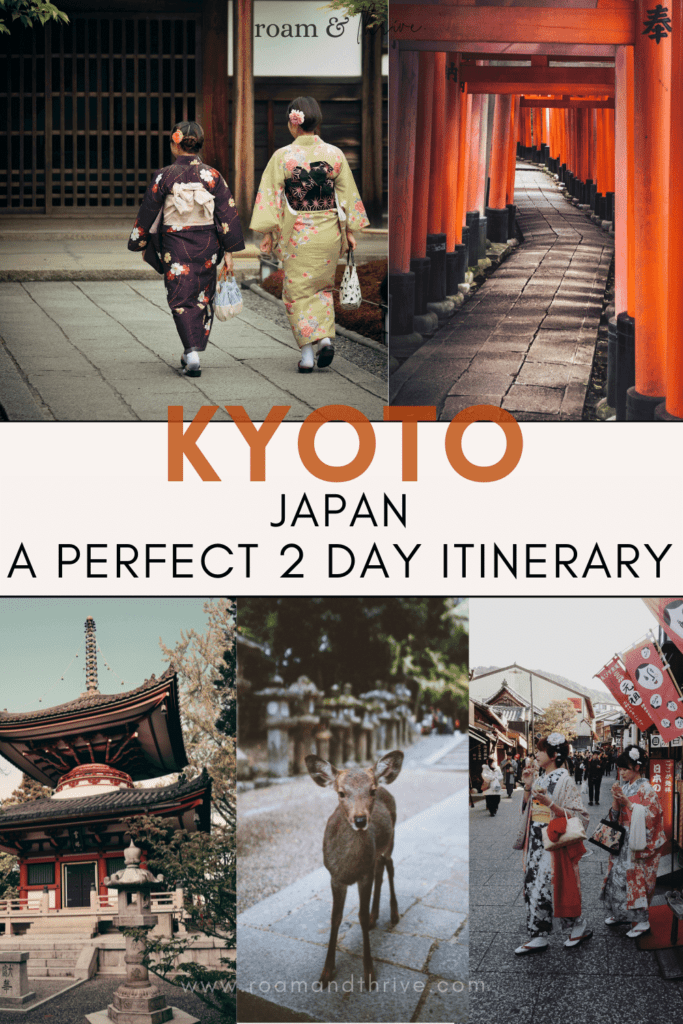
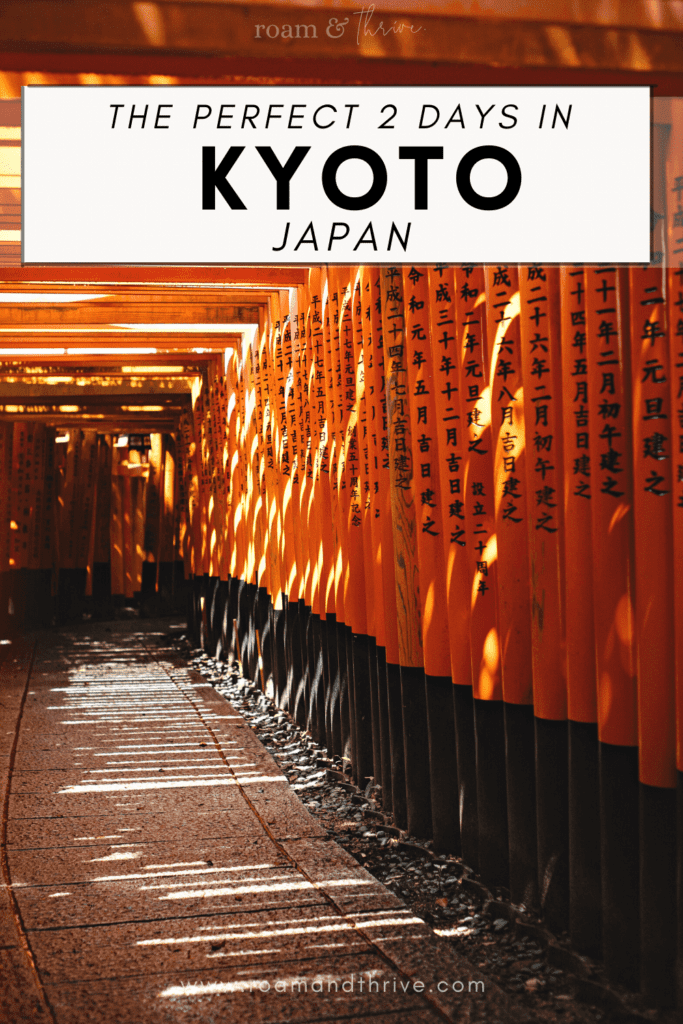
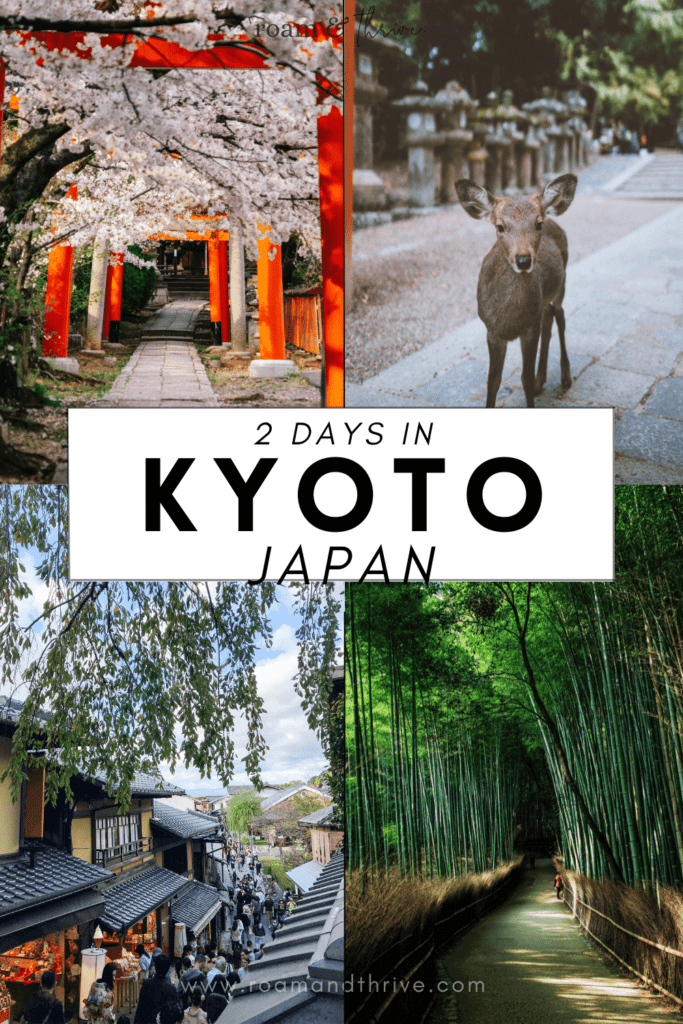

Ahmed
wow, Kyoto such a beautiful Japanese city to visit, full of greenery and combination of modern and ancient architecture.
Alex
AhmedThat’s, right such an amazing place to visit.
Jenn
Thanks for the food recs. I’m looking to return to Kyoto for the second time and really want to explore some of the different restaurant options.